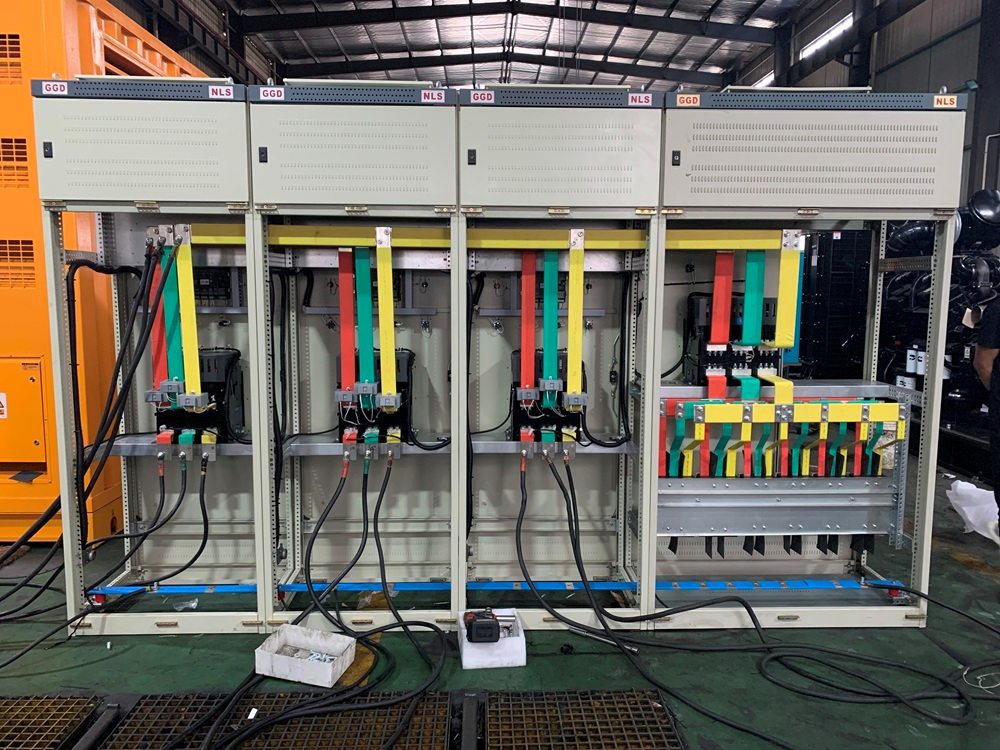Smarter Backup Power: How Diesel Generators Team Up
May 08, 2024
Imagine a hospital during a storm-induced blackout. Critical equipment must stay online. A single large generator could fail. The solution? Diesel Generator Paralleling Systems – the intelligent backbone of reliable, scalable emergency power.
What is Paralleling?
Simply put, paralleling involves synchronizing multiple diesel generator sets to operate together, feeding a common electrical busbar. It's like having several engines perfectly coordinated to drive a single, massive flywheel (the electrical load).
Why Go Parallel? Key Advantages
1. Enhanced Reliability (Redundancy): This is the prime benefit. If one unit fails during operation ("N" running), another ("N+1") instantly picks up the slack. Your power supply remains uninterrupted – crucial for data centers, hospitals, and manufacturing.
2. Scalability & Load Management: Need more power? Start another generator and seamlessly synchronize it. Need less? Automatically shed a unit based on preset load thresholds (e.g., disconnect a unit if total load drops below 40% of combined capacity). This optimizes fuel efficiency and reduces wear.
3. Flexibility: Systems can start with just one unit for small loads or pre-synchronize multiple units before connecting large blocks of critical load ("closed transition"). Maintenance is easier too – units can be serviced individually while others run.
4. Cost-Effectiveness: Often cheaper than one massive generator of equivalent capacity. Uses smaller, standardized units. Fuel efficiency improves under partial loads when managed well.
5. Expandability: Need more power later? Add more generator sets to the existing paralleling switchgear system.
How Does it Work? The Core Process
1. Start Signal: A utility failure or manual command initiates startup.
2. Synchronization: Each generator ramps up. Sophisticated controllers monitor:
Voltage: Must be matched.
Frequency: Must be identical (Hz).
Phase Angle: Voltage waveforms must be perfectly aligned.
3. Closing the Breaker: Once perfectly synchronized, the controller signals the generator's circuit breaker to close, connecting it to the live busbar.
4. Load Sharing: The real magic! Once paralleled, controllers constantly communicate (often via CANbus). They automatically adjust engine speed (governors) and generator excitation (AVRs) to ensure:
kW (Active Power) Sharing: Engines share the actual work (amperes in-phase with voltage) proportionally.
kVAR (Reactive Power) Sharing: Generators share the magnetizing current (amperes out-of-phase) proportionally. Modern systems achieve sharing within 1-5% accuracy.
5. Load Management: The master controller monitors total bus load. If it exceeds a high setpoint (e.g., 85% of online capacity), it starts and syncs the next unit. If load drops below a low setpoint (e.g., 40%), it initiates an orderly shutdown of the lowest priority unit.
6. Utility Return & Shutdown: When mains power is restored and stable, the system transfers loads back. Generators run unloaded briefly (cool-down period), then shut down, ready for the next event.
Critical Components
Generator Control Modules: On each unit, handling start/stop, engine/generator protection.
Paralleling Switchgear: Contains the busbars, generator breakers, metering, and protective relays.
Master Paralleling Controller (MPC): The "brain." Manages synchronization, load sharing, load demand, unit sequencing, and communication. Often features redundancy.
Synchronizer: Ensures perfect matching before breaker closure.
Load Sharing Controllers: Work with governors and AVRs for proportional kW/kVAR sharing.
Applications: Where Uninterrupted Power is Non-Negotiable
Healthcare: Hospitals, labs, dialysis centers.
Data Centers & Telecom: Server farms, switching stations.
Industrial: Continuous process plants (chemical, pharma), manufacturing.
Commercial: High-rise buildings, airports, financial institutions.
Utilities: Backup for critical substations.
Conclusion
Diesel generator paralleling systems transform individual power sources into a resilient, intelligent, and adaptable power network. By providing unmatched redundancy, scalability, and optimized operation, they are the definitive solution for applications where power continuity is paramount and a single point of failure is unacceptable. When the grid falters, a well-designed paralleling system ensures vital operations don't miss a beat. It's not just backup power; it's engineered reliability.
اقرأ المزيد




